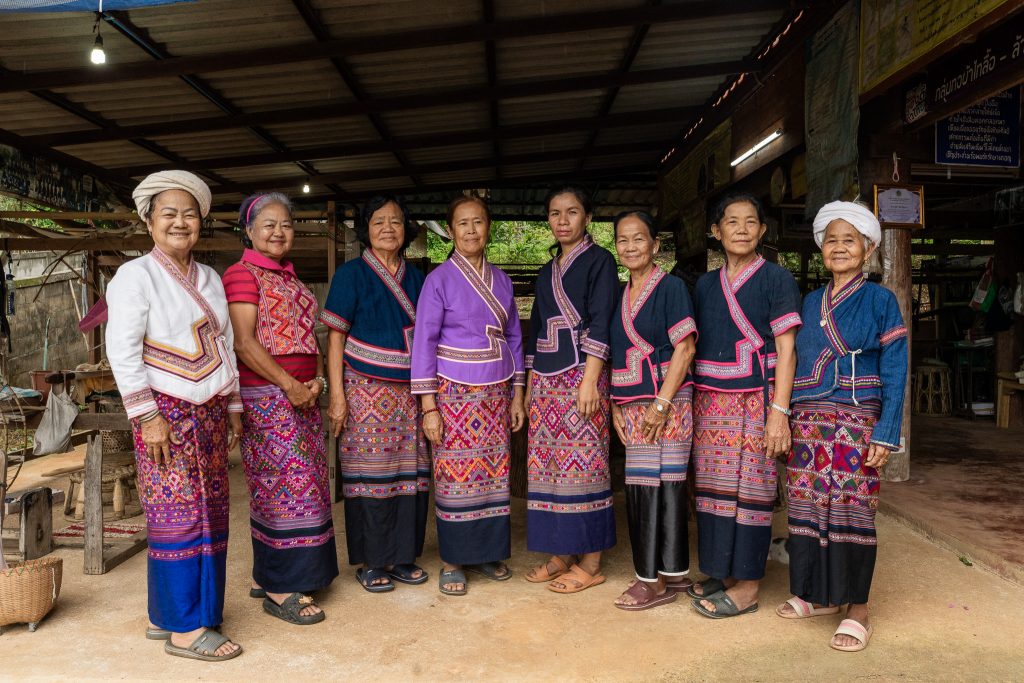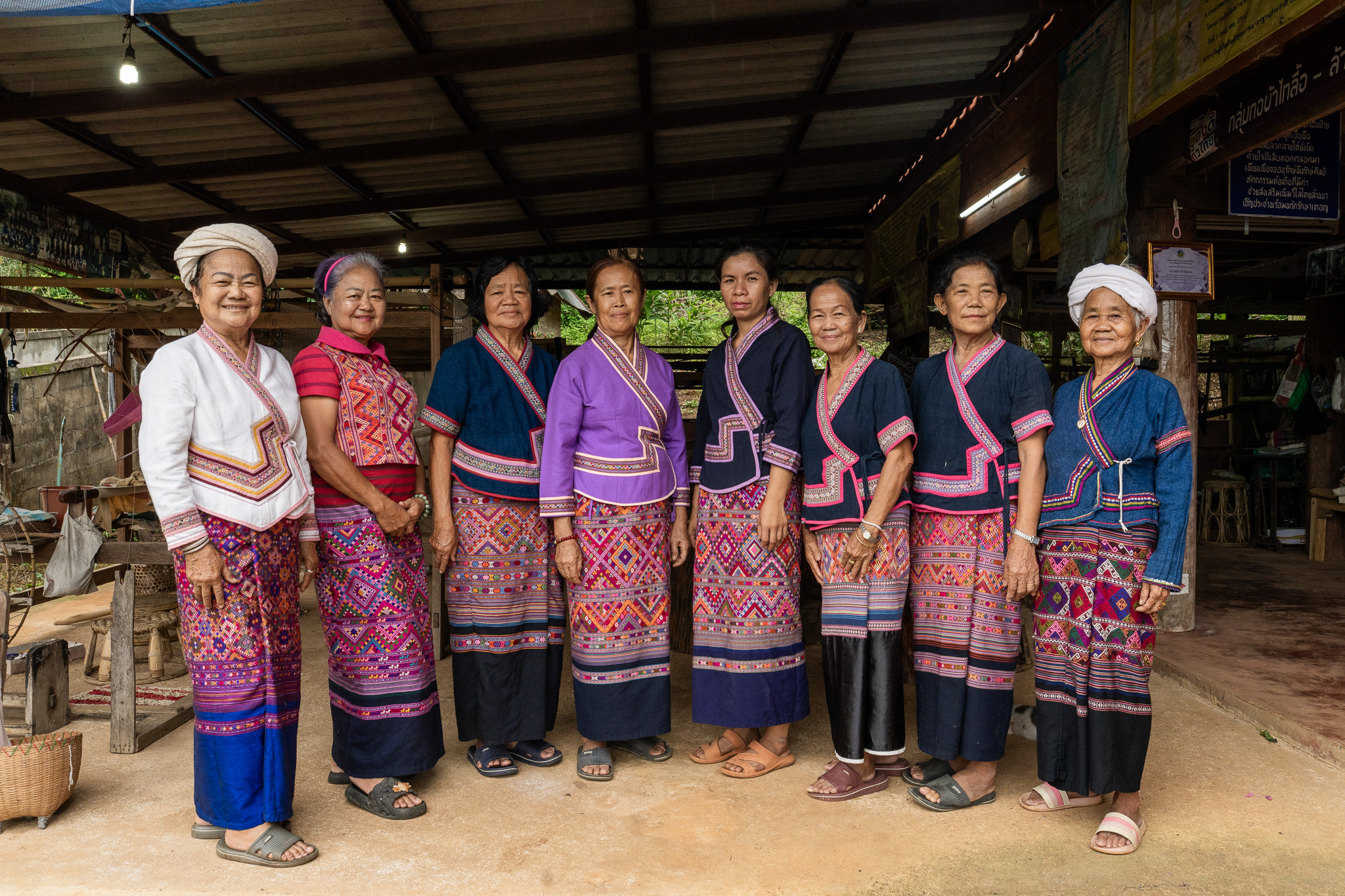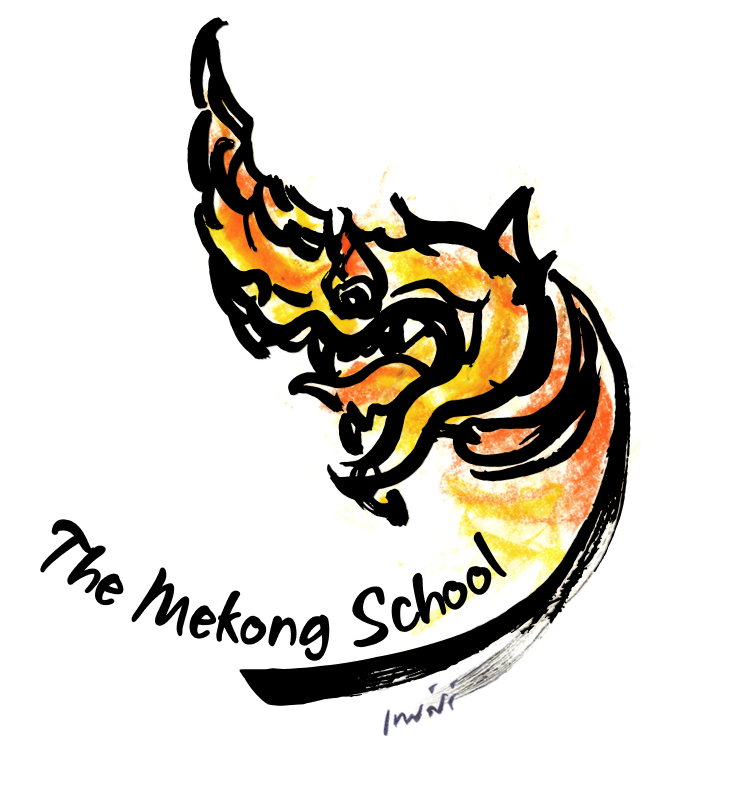On September 12th, 2024 the Eli and Edythe Broad Art Museum opened a new exhibit entitled Mekong Voices: Transnational River Justice in Mainland Southeast Asia. The exhibit features artists from Thailand, Cambodia, Myanmar, and Laos. highlights the ecological richness and cultural diversity shaped by the Mekong River, as well as struggles for environmental justice throughout the basin.
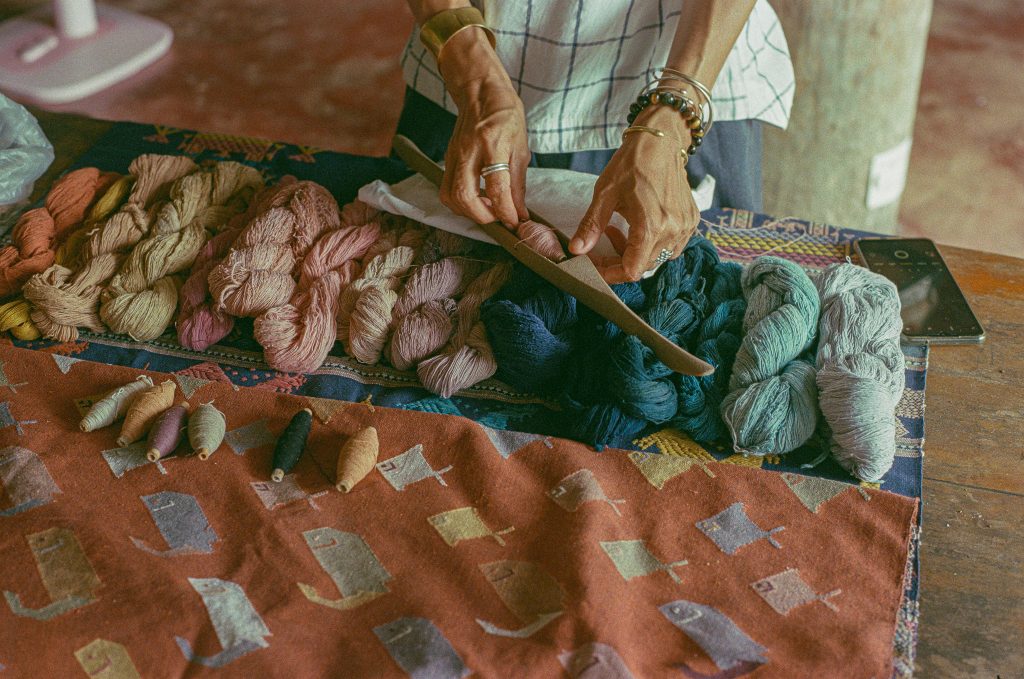
The Baan Had Bai Tai Lue Weavers, hailing from tambon Rim Khong, Amphur Chiang Khong, Chiang Rai Thailand feature centrally in the exhibit. Their weaving, entitled “Weaving the River of Life of Tai Lue” or “ผ้าทอแห่งสายน้ำชีวิตไหลื้อ”, exemplifies how traditional crafts can serve as living archives for community history and river justice. Each meticulously woven fabric pattern – such as the Mother River (Lai Mae Nam Khong), the Naga (Lai Nakh), and Flowing Water (Lai Nam Lai) – embodies the stories, livelihoods, and ecological connections of the Tai Lue, who have lived alongside the Mekong for generations. Their artistry honors the river’s abundance, and reflects the artist’s deep relationships with the land, water, and ecologies from which they draw life.
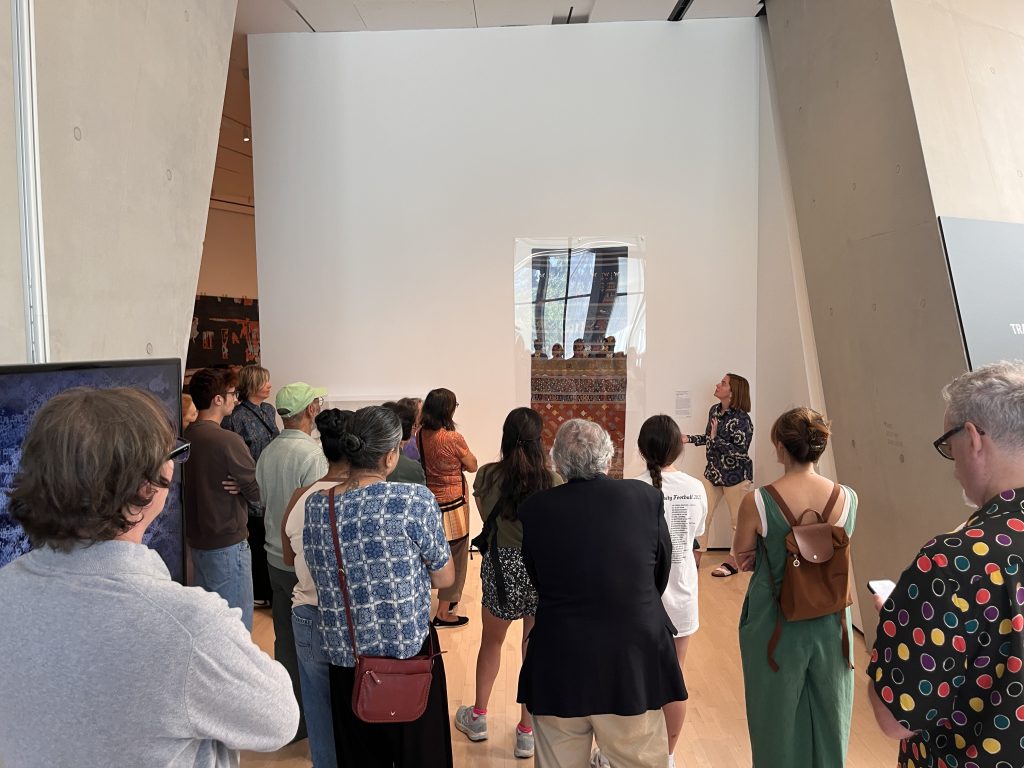
The weavers, who were trained by their mothers and grandmothers since childhood, pass down the tradition of weaving through matrilineal lines. The work layers ancient patterns with new ones to reveal the community’s co-evolution with the Mekong River. A healthy red river teeming with fish and life-giving sediments contrasts with a blue-gray, fishless river, choked by dams, pollution, and commercial shipping. A peaceful, sandy riverbed full of trees and crabs for residents to forage contrasts with memories of helicopters that bombed their villages during the Lao civil war. Butterflies, representing transformation and resilience for Theravada Buddhists, flutter around a sacred stupa, promising a future for all.
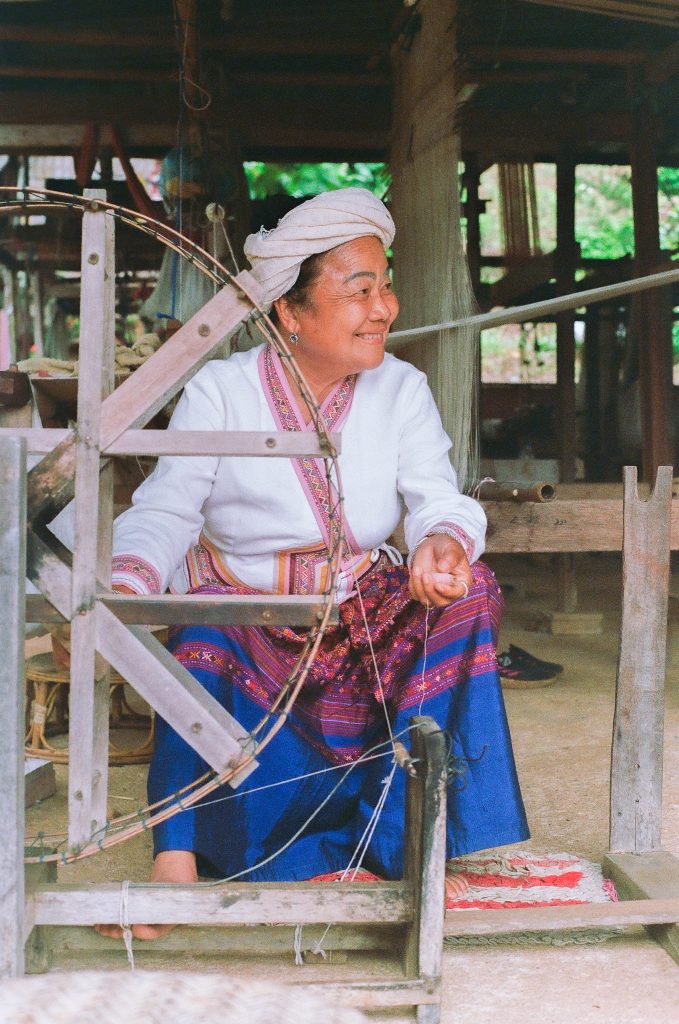
Sukhawaddee Tiyatha, the head weaver of the Had Bai Tai Lue Weaver’s group, reflected on the exhibit’s opening:
“Lai, or patterns, are a way of life. Fabrics are used to tell stories that arise from everyday life, leading to people coming together to create income until this cloth is created. This cloth tells the stories of the villagers who are connected to their way of life regarding food and traditions. Therefore, this cloth has a lot of meaning to us, as it tells the story of how our way of life has changed from the past to the present.”
Through the lens of Tai Lue weaving, the exhibition foregrounds traditional craft as both art and activism, amplifying indigenous voices concerned with ecological changes, resource management, and community resilience. The artist’s work is part of their effort to preserve traditional handicrafts, cultural knowledge, and local histories that are essential to a broader regional heritage.
The exhibition was developed through the Mekong Culture WELL project, with interdisciplinary and multilingual collaboration linking MSU researchers and communities from the Mekong. The handwoven pieces from Baan Had Bai encourage visitors to listen deeply to the river’s voice as expressed through textile, activism, and everyday livelihoods, and to reflect on the interconnectedness of people, river, and justice.
The artists that make up the Baan Had Bai Tai Lue Weavers Group include Sukhawadee Tiyatha, Buasai Thammawong, Saengpha Thammawong, Lai Thammawong, Buakhuen Thammawong, Duangporn Thammawong, Khankaew Thammawong, and Khamee NuanCham; with special thanks to Somsak Tiyatha. The Mekong School: Institute of Local knowledge facilitated workshops and planning around the design and curation of the weaving, with special thanks to Nopparat Lamun, Malee Pattanaprasitporn, and Chak Kineesee. The piece was co-curated for the exhibit by MSU Professor Dr. Amanda Flaim, Dr. Kelsey Wagner, and PhD Student Leo Baldiga.
